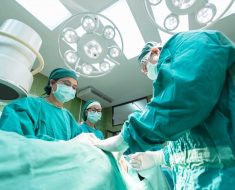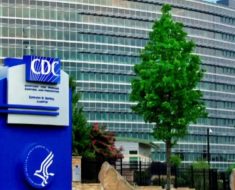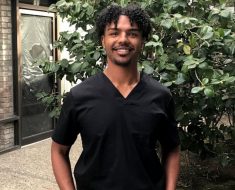
Two nationwide COVID-19 antibody seroprevalence studies from Brazil show that many cities along the Amazon were hit hardest at the beginning of the epidemic in May and June, along with poorer and Indigenous communities. The research is presented at this week’s ESCMID Conference on Coronavirus Disease (ECCVID, held online 23-25 September) and published in The Lancet Global Health, as part of a special conference session featuring The Lancet journals.
“Brazil has become a global hotspot for the COVID-19 pandemic in terms of reported cases and deaths,” explains lead author Professor Cesar Victora, Federal University of Pelotas, Pelotas, Brazil. “Existing seroprevalence studies in Brazil have focused on the more developed parts of the country, represented by the southern and southeastern regions. So it is vital that we have more accurate data on the national situation.”
The researchers did two household surveys in the most populous cities in all 133 so called ‘mesoregions’ – regional hubs used by the Brazilian Institute of Geography and Statistics to report on demographic and socioeconomic data across Brazil, covering 26 states and the Federal District. The studies included more than 25000 participants in the period May 14-21 and over 32000 in June 4-7. At each location, the researchers randomly selected households and randomly selected one individual from all household members to test for COVID-19 antibodies.
Participants also answered short questionnaires on sociodemographic information (sex, age, education, ethnicity, household size, and household assets) and compliance with physical distancing measures.
For the 83 (62%) of cities with sample sizes of more than 200 participants in both surveys, the pooled seroprevalence increased by more than 50%, from 1·9% to 3·1%, from the first survey to the second survey. City-level prevalence ranged from 0% to 25·4% in both surveys. 11 (69%) of 16 cities with a prevalence above 2.0% in the first survey were located along a 2000 km stretch of the Amazon river in the northern region, including well-known cities such as Belem, Manaus and Macapa, which are all state capitals located along the Amazon.
In the second survey, the authors found 34 cities with prevalence above 2.0%, which included the same 11 Amazon cities plus 14 from the northeast region, where prevalence was increasing rapidly. Prevalence levels were lower in the south and centre-west, and intermediate in the southeast, where the highest level was found in Rio de Janeiro (7·5%).
In the second survey, prevalence was similar in men and women, but an increased prevalence was observed in participants aged 20-59 years compared to younger or older persons, and in those living in crowded conditions (4·4% for those living with households with six or more people). Prevalence generally increased the more individuals there were per household.
Prevalence among Indigenous people, at 6.4%, was more than four times higher than that found among White people (1.4%). The poorest 20% of the population had a seroprevalence of 3.7%, more than double the 1·7% found in the wealthiest 20%.
The authors say: “Our most remarkable finding was the cluster of high prevalence in 11 cities along the Amazon River, with levels that were among the highest ever reported in population-based studies. This finding of high prevalence in a tropical region contradicts common wisdom that continents such as Africa might be protected against COVID-19 because of high ambient temperature.”
The authors believe the high rates of seroprevalence in Indigenous Brazilians are due to a cluster of factors, geographical region, household size (usually overcrowded living conditions), and poverty. Mortality rates for most medical conditions are higher in Indigenous Brazilians, and this population was largely left behind during Brazil’s rapid economic and health advances that began in the 1990s.
Overall, the authors say: “Our results must be interpreted in terms of the controversial management of the pandemic by the national government. Testing was restricted to individuals with severe symptoms during the early stages of the pandemic and contact tracing was virtually non-existent. Two consecutive health ministers were either dismissed or resigned in less than 1 month because of their opposition to the president’s stance regarding physical distancing and the use of hydroxychloroquine to treat COVID-19, and since May 15, the country has not had a health minister… The controversial handling of the epidemic by the federal government is likely to have contributed to the rapid spread of COVID-19 in the country’s most susceptible populations.”
While initially many state governors were supportive of social distancing measures and some form of lockdown, the country has now gradually reopened, despite the persisting high incidence of new cases and deaths.
The authors conclude: “The effect of relaxing these measures is still too early to assess, but further waves of serological surveys will allow monitoring of the progression of the pandemic and help assess the effectiveness of policy changes.”
The authors have also carried out two additional seroprevalence surveys since the two reported in this paper, with an average prevalence of 3.8% in the third study from June 21-24, followed by a sharp decline to 1.4% in the last survey round that was carried out from August 27-30, after an interval of 66 days. This surprised the researchers, since they were expecting cumulative seroprevalence to continue rising (seroprevalence measures the proportion of individuals who have had the infection at some point, not the proportion who are currently infected).
Source: Read Full Article





